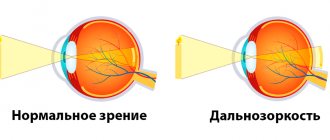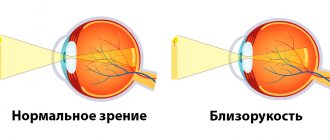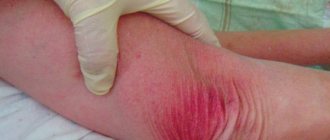Obsession is a state of the human nervous system, which is characterized by the presence of a constant obsession. The peculiarity of this deviation lies in the subconscious focus on involuntary goals. A person may be psychologically aware that he is fixated on an obsessive and completely unnecessary idea. But no one is able to overcome this condition on their own. As a result of this, depression and suppression of the emotional component manifests itself.
What is obsession like?
There is a wide range of this type of psychological disorder. The most common manifestations of obsessive ideas are:
- Involuntary conclusions (a person constantly talks about the same thing, regardless of the situation);
— Arithmomania (a person constantly makes arithmetic calculations in his head that are not related to the environment);
— Constant stories about some event, fixation on ideas (you hear from a person the same thought, which should be appreciated by others).
Obsession can often be confused with schizophrenia or other types of psychological disorders. Therefore, experienced psychiatrists should take part in the diagnosis.
In addition to the manifestations described above, a person with this disorder may constantly doubt the correctness of his daily actions.
One example of obsession can be considered a constant desire to curse with obscene words, with or without reason. In practice, there have also been situations where a person had an obsession with making love in public. Regardless of the form in which mental deviation is expressed. What remains important is its cause and degree of neglect.
Features and manifestations of obsessions
The name of the group of obsessive mental disorders comes from the Latin word for “siege.” The name is very accurate - obsessive ideas and thoughts come as if from nowhere, “besiege” the patient, prevent him from doing business and relaxing, and sometimes even frighten him or push him to do dangerous things.
The first such disease described in medicine was a neurosis called obsessive-compulsive disorder (OCD). The discovery was made by the Swiss physician Felix Plater back in 1614. And almost 2.5 centuries later, a common feature of obsessive states was noticed - their alienness to consciousness, painfulness and “wrongness”.
Free consultation right now!
Online consultation with a specialist on your issue!
License number: LO-77-01-019036
Symptoms of obsession:
- hallucinations and intrusive negative images;
- obsessive limited movement disorders;
- unpleasant thoughts-ideas expressed in words;
- obsessive urges to do bad, destructive things;
- reflections in the form of endless dialogues in your own mind;
- obsessive doubts about whether the patient acted correctly or not;
- phobia of incurable disease, phobia of everything, as well as fear, pollution;
- intrusive memories of unworthy actions, remorse and shame;
- compulsions (obsessive actions that turn into protective rituals);
- negative “alien” thoughts with inexplicable antipathy towards different people.
Children's obsessions are more stable and manifest themselves in compulsions and fears, while teenagers' obsessions manifest themselves in obsessive thoughts like counting steps or special rituals invented by the teenager himself (for example, a ban on stepping on cracks in the asphalt). In adolescents, obsessive disorder is mainly manifested by obsessive, self-invented rituals or prohibitions. Adolescent obsessions also include such obsessive thoughts as counting windows in houses or steps in the entrance.
If you do not help your child in time, you will not be able to get rid of the obsessive state.
A person experiencing an obsessive state may blush or turn pale, feel a rapid or “slow” pulse, break out in a cold sweat, have difficulty breathing or standing, and lose consciousness and control of urination. The character of such a patient changes for the worse, becoming suspicious, insecure, anxious, shy, and excessively fearful. Obsessional syndrome may accompany psychosis or schizophrenia.
Write to WhatsApp
COST OF TREATMENT
The complexity of this condition lies in the patient’s inability to get rid of it on his own. When trying to suppress obsessive thoughts and emotions, a person only sinks deeper into his obsession.
Medical is ready to help you relieve and cure obsessive states. With us you will find understanding and delicacy, complete anonymity, high professionalism and effectiveness of therapy.
What symptoms characterize obsession?
There are several symptoms of obsessions that are characteristic of a complicated mental disorder:
— Panic fears, vision of a threat to health and life for no reason;
— Stiffness, indecisiveness in actions;
— High level of anxiety associated with low self-esteem;
- Lack of concentration in everyday life.
All these mental manifestations can be expressed in phobias, panic fear, manifestations of depression and depression.
Causes of obsessive disorders
Doctors cannot yet explain the mechanism of the appearance of obsession, but several of the most common hypotheses say that the obsessive state is caused by:
- individual characteristics of the ANS and brain;
- problematic exchange of neurotransmitters;
- childbirth and breastfeeding;
- strict upbringing in the family;
- past diseases;
- accentuations of character;
- heredity;
- social phobia;
- depression.
Factors that cause obsessional reactions include inadequate self-esteem: abnormally low (self-flagellation) or high (delusions of grandeur, pride). Self-esteem is usually unconscious.
Most often, obsessions develop in people who have lost or have not found a purpose in life. Existence without priorities and meaning becomes aimless. Aimlessness leads, in turn, to confusion of thoughts, which brings to life an obsession. Doctors call this condition self-deception - a person refuses responsibility for his life, the need to develop and grow.
If your loved one is plunged into obsession and you cannot help him, call the doctors of the KORSAKOV clinic at his home address. A specialist will arrive around the clock anywhere in Moscow and the region in 40-60 minutes. He will find an approach to the patient and motivate him to accept professional medical help.
Obsessive-compulsive disorder
Obsessions manifest themselves in various forms, both individually and in combination:
- Obsessive ideas are involuntary thoughts, the content of which does not carry adequate information, which is critically assessed by the patient who controls his behavior.
- Obsessive doubts are obsessive thoughts with painful uncertainty about the correctness and completeness of one’s actions. Obsessive thoughts predominate about the correctness of decisions that have usually already been made or actions taken (did you lock the door, did you turn off the gas). Patients constantly strive to test themselves, while practically not calming down.
- Obsessive actions are compulsions associated with an irresistible desire to perform any actions or movements. Obsessive actions are performed against desire, reminiscent of natural, but gestures and movements that have lost their meaning. Patients with such habitual, repetitive movements can shake their heads, as if checking whether the headdress fits well, make movements with their hands, as if throwing away interfering hair, straighten the folds of clothing, etc.
- Obsessive ideas are obsessions associated with intrusively arising the same ideas.
- Obsessive recollections are obsessions associated with the desire to remember any information, dates, names without any need.
- Obsessive fears (phobias) are varied in content. The most common fears are fear of open spaces and closed spaces (agoraphobia, claustrophobia), fear of transport, fear of being able to perform any usual functions (swallowing, urination, sexual intercourse, etc.), associated with anxious fears of failure. Along with this, fear of public speaking, fear of blushing (ereitophobia), showing awkwardness or confusion in society, as well as various nosophobias (cardiophobia, cancerophobia, fear of going crazy, etc.) are often noted. Sometimes there is a fear of obsessive fears (phobophobia).
- Obsessive rituals are obsessive movements and actions that have the meaning of a spell and are of a protective nature. Rituals usually act together with phobias, obsessive doubts and fears to prevent an imaginary misfortune (for example, the death of loved ones) or to overcome obsessive doubts (for example, doubts about the successful outcome of upcoming events in the service). At the same time, a number of obsessive actions are performed in a certain order - moving only along certain routes, using only the head cars when traveling in transport, etc. Performing the ritual is usually accompanied by a feeling of relief.
In case of obsessive fear neurosis , the content of phobias depends on the age of the child:
- In younger children, obsessive fears of infection and contamination, sharp objects (especially needles), and closed spaces predominate.
- In older children and adolescents, fears of illness and death (from suffocation, cardiac arrest, etc.), fear of choking while eating, fear of blushing, and obsessive fear of speaking (for people who stutter) dominate. Fear for one's health is often transferred to loved ones and appears in the form of fear for the health of parents.
A special type of phobic neurosis in adolescents is expectation neurosis, which is characterized by anxious anticipation and fear of failure when performing any habitual action, as well as violation of this action when trying to perform it. Manifestations of expectation neurosis in older children and adolescents include the so-called fear of oral answers in class, which is accompanied by the inability to coherently present the material when called to the board, despite the fact that they are well prepared. The phenomena of expectation neurosis are often associated as secondary disorders with other neurotic disorders (for example, neurotic stuttering and enuresis, neurotic insomnia).
Symptoms of obsessive action neurosis in children and adolescents are expressed mainly in the form of a variety of obsessive movements and actions. In preschool and primary school age, elementary obsessive movements predominate - obsessive tics , as well as relatively simple obsessive actions.
The nature of obsessive tics is very diverse, most often they are blinking, wrinkling of the forehead or nose, twitching of the shoulders, respiratory tics (“sniffing”, “grunting”, coughing, etc.). Externally similar involuntary movements are often observed in young children with various disorders.
When delimiting these very similar manifestations, it is necessary to keep in mind the following signs characteristic of neurotic (obsessive) tics: obsessive tics arise on the basis of various expedient defensive movements, often reflexive (blinking reflex when a foreign body hits the eye or with conjunctivitis; wrinkling of the forehead when descending low hair, licking lips when they are dry, shrugging shoulders and throwing back the head when a frightening object appears in front of the face, etc.), although later they lose their original protective nature. A patient with obsessive tics has a need to repeat an obsessive movement, associated with emotional stress, which intensifies when this movement is delayed. Obsessive movements are perceived by patients (excluding children of early and pre-school age) as alien, painful, as a “bad habit”. School-age children are often embarrassed by their obsessive tics and try to hide or disguise them. Obsessive tics do not have signs of neurological locality (for example, in the form of a clear predominance on one side), which are often observed with neurosis-like tics of residual organic origin. Obsessive tics intensify significantly with anxiety and in traumatic situations, while in the case of a somatic illness they either do not change or even weaken. Tics of an obsessive nature, as a rule, are combined with various neurotic disorders, including obsessive fears, apprehensions, etc. The use of psychotherapeutic measures for obsessive tics is often effective, while for neurosis-like tics of any origin, most types of psychotherapy (excluding autogenic training) are ineffective.








